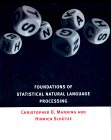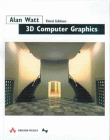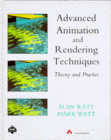
|
Natural Language Understanding
A good introduction to grammar based NLP. Includes chapters on
parsing, grammars, semantics, ambiguity resolution and discourse
structure among others. |
|

|
A good complimentary introduction to, as the title suggests,
statistical based NLP. Includes chapters on mathematical foundations,
corpus-based work, word sense disambiguation, Markov models, POS
tagging and information retrieval. |
|

|
Although I originally bought this book to study for a course in
machine learning the best thing in it is the sections on text
classification. Between two of us we built a very accurate
e-mail classifier based on information found in this book. The classifier
learns using standard machine learning techniques all of which are
covered in detail, with examples including text classification. |
|

|
Although I haven't currently worked my way all the way through this
book, it seems to be a really good introduction, to a really great
area of science, including information such as how the indexing is
carried out for the Google search engine. |
|

|
A great book covering algorithms for the standard and best forms of
compression, storage and processing of large collections of text and
images. A must for anybody doing research into information
retrieval. |

|
In this book Deborah Cadbury brilliantly recreates the remarkable story of the bitter rivalry between two men:
Gideon Mantell uncovered giant bones in a Sussex Quarry, became obsessed with the lost world of the reptiles and was
driven to despair. Richard Owen, a brilliant anatomist, gave the creatures their name and secured for himself
unrivalled international acclaim. |
|

|
In 1905 an elderly couple were found murdered in their shop in Deptford, London. The only evidence at the crime was a sweaty
fingerprint on a cashbox. Was it possible that a single fingerprint could be enough to lead to a conviction? Could the
pattern of these tracks hold the secrets of the science of identification? Fifty years earlier, William Herschel, the colonial
administrator in India, had begun to experiment with fingerprints as an irrefutable method of establishing identity. In the 1880s,
Henry Faulds, a missionary in Japan, began to study the formation of the whorls, arches and loops on each finger and was the
first to ask whether these traces could be the unique key to identifying every individual. |
|

|
When the French invaded Egypt in 1798, they were astonished to find countless ruins covered with hieroglyphs - remnants
of a language lost in time. The quest to decipher hieroglyphs began in earnest: fame and fortune awaited the successful
scholar. Amid political turmoil in France, caused by Napoleon's meteoric rise and catastrophic fall, Jean-François Champollion
was hounded, exiled and even charged with treason, but still overcame poverty and ill-health to beat his closest rival,
the English scientist Thomas Young. |
|

|
Years after Dr William Macbeth dies, his wooden medicine case passed to his estranged son, who treated the bequest like a
poisoned chalice. Over the protests of his family, he buried the case with its bottles of
dangerous residue deep in the ground
out of sight and mind. But Macbeth's granddaughter, Gail Bell, who watched the arrival of the bottles as a 10 year old, eventually
learnt the reason for her father's fear: in 1927 Macbeth had been accused - though it never came to trial - of poisoning
two of his sons. The book is the story of the dark secrets that lie hidden within a family. Bell is determined to understand
how this "calm, warm and caring" healer became a murderer and avoided detection. But as the the unexpected twists of her
investigation reveal, nothing is as straightforward as it seems. |
|

|
In this sweeping and penetrating investigation into the lop-sided universe, Chris McManus takes familiar, deceptively simple,
questions about handedness and asymmetry and attempts to answer them:
Why are most people right-handed? Do left-handers
behave differently to right-handers? Why do mirrors reflect left-right, but not top-bottom? and Why are muppets left-handed? |
|

|
When detectives come upon a murder victim, there's one thing they want to know above all else: When did the victim die? The
answer can narrow a group of suspects, make or break an alibi - even assign a name to an unidentified body. But outside the
world of crime fiction, time-of-death determinations have remained famously elusive, bedevilling forensic pathology throughout
history. Tracing her story from the Ancient Greeks and Egyptians, the author shows how criminal investigations and scientists have
made use of an extraordinary variety of indicators. |
|

|
This is undoubtedly an expensive set of three books but worth every penny I spent on them.
The three books together cover the history of numbers from caveman to computer a remarkable
achievement and one that has been
done in an astonishingly good way. |

|
"I come from Des Moines. Somebody had to" and as soon as Bill Bryson was old enough, he left. After ten years in England he returned
to the land of his youth, and drove almost 14000 miles in search of a mythical small town called Amalgam, the kind of smiling
village where films of his youth were set. |
|

|
Bill Bryson's first travel book, The Lost Continent, was unanimously acclaimed as one of the funniest
books in years. Now he brings his unique brand of humour to travel writing again as he shoulders
his backpack, keeps a tight hold on his wallet, and heads for Europe. From Hammerfest in the north, to
Istanbul on the cusp of Asia, he makes his way round this incredibly varied continent, retracing his
travels as a student twenty years ago with caustic hilarity. |
|

|
After nearly two decades in Britain, Bill Bryson recently took the decision to move back to the States for a while,
to let his kids experience life in another country, to give his wife the chance to shop until 10 p.m. seven nights
a week, and, most of all, because he had read that 3.7 million Americans believed that they had been abducted by aliens
at one time or another, and it was thus clear to him that his people needed him.
But before leaving his much-loved home in North Yorkshire, Bryson insisted on taking one last trip around Britain, a sort
of valedictory tour of the green and kindly island that had so long been his home. |
|

|
The Appalachian Trail stretches along the East Coast of
the US, from Georgia to Maine, through some of the most arresting and celebrated landscape of America.
In the company of his friend Stephen Katz, Bill Bryson set of to hike through
the vast tangled woods which have been frightening sensible people for
300 years. Ahead lay
almost 2,200 miles of remote mountain wilderness filled with bears, moose, bobcats, rattlesnakes,
poisonous plants, disease-bearing ticks, the occasional chuckling murderer and - perhaps most alarming of all - people whose favourite pastime is discussing the relative merits of the external-frame backpack. |
|

|
After Notes from a Small Island Bill Bryson returned to live in the country he had left as a youth. Of course there
were things Bryson missed about Blighty but any sense of loss was countered by the joy of rediscovering some
of the forgotten treasures of his childhood: the glories of a New England autumn; the pleasingly comical sight
of oneself in shorts; and motel rooms where you can generally count on being awakend in the night be a piercing
shriek and the sound of a female voice pleading "Put the gun down Vinnie, I'll do anyything you say." |
|

|
It is the driest, flattest, hottest, most desiccated, infertile and climatically
aggressive of all
the inhabited continents and still Australia teems with life - a large portion of it quite deadly.
In fact, Australia has more things that can kill you in a very nasty way than anywhere else.
Ignoring such dangers - and yet curiously obsessed by them - Bill Bryson journeyed to Australia
and promptly fell in love with the country. And who can blame him? The people are cheerful,
extrovert, quick-witted and unfailingly obliging: their cities are safe and clean and nearly always
built on water; the food is excellent; the beer is cold and the sun nearly always shines. Life doesn't
get much better than this... |




















